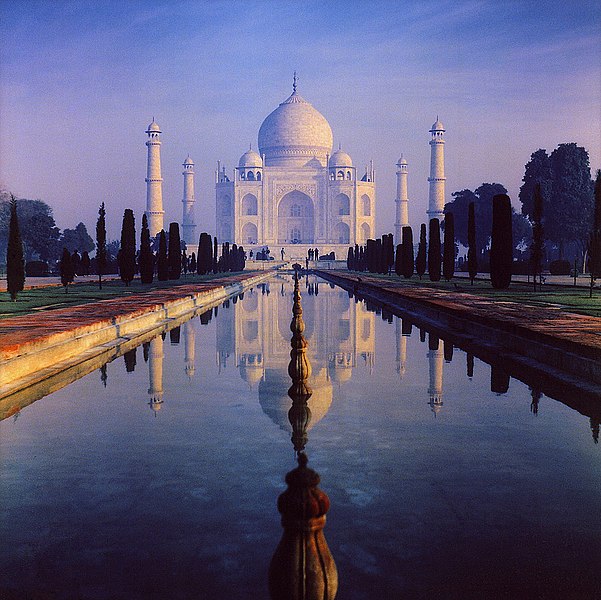In 1631 Mumtaz Mahal, wife of the Mughal emperor Shah Jahan, died during childbirth. Shah Jahan was devastated. He vowed to build a monument so grand that the world would never forget her. The next year he began construction on this:
Shah Jahan wrote of the Taj Mahal:
Should guilty seek asylum here,I know starting from the end may be in slightly bad taste, but in this case, how can you not?
Like one pardoned, he becomes free from sin.
Should a sinner make his way to this mansion,
All his past sins are to be washed away.
The sight of this mansion creates sorrowing sighs;
And the sun and the moon shed tears from their eyes.
In this world this edifice has been made;
To display thereby the creator's glory
There's something of a Rachel and Leah flavor to this couple's story. Anjumand Banu was born in Agra to a family of the Persian nobility. At 14 she was betrothed to Shah Jahan, but the wedding was delayed for... reasons... (the court astrologers took five years to decide on an auspicious date) and Shah Jahan was pressed to marry two other women in the meantime. When Shah Jahan and Anjumand Banu were finally allowed to wed, he gave her the name Mumtaz Mahal, meaning "Chosen One of the Palace".
 |
| A Mughal painting of Mumtaz Mahal circa 17th century |
The other wives had nothing more than the status of marriage. The intimacy, deep affection, attention and favour which His Majesty had for the Cradle of Excellence (Mumtaz) exceeded by a thousand times what he felt for any other.Shah Jahan appears to have done his duty and sired the appropriate one child each with both other wives, and that was all. In contrast, Mumtaz Mahal had fourteen children, one of whom was the celebrated poet Roshanara Begum - a woman who never married and was known as the brilliant mastermind behind her brother Aurangazeb's ascension to the throne.
Mumtaz Mahal was so trusted by Shah Jahan that he gave her the imperial seal, the Muhr Uzah. She was involved in commissioning architecture in Agra and helped the poor. She also always traveled with Shah Jahan, even on his military campaigns.
When Mumtaz Mahal died, Shah Jahan went into mourning for a year and declared that she would never be forgotten. He appears to have been correct.

No comments:
Post a Comment